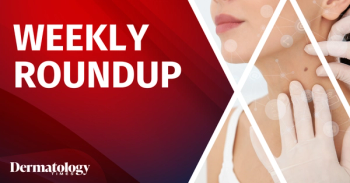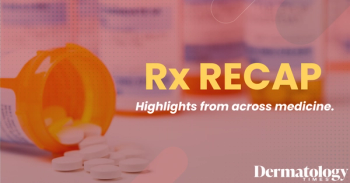
Novel Serum Improves Facial Skin Quality in Patients Using GLP-1 Receptor Agonists
Key Takeaways
- GLPSGLT serum improved skin hydration, elasticity, and appearance in patients using GLP-1 RAs and SGLT-2 inhibitors after six weeks.
- The pilot study used a split-face, double-blind, placebo-controlled design with seven female participants, showing significant results by day 21.
The groundbreaking GLPSGLT serum enhances skin quality for GLP-1 RA users, improving elasticity and reducing wrinkles in just 6 weeks.
A novel skin care treatment has been developed for patients with reduced facial skin quality due to the use of Glucagon-like peptide-1 receptor agonists (GLP-1 RAs) and SGLT-2 inhibitors.1 The topical serum, GLPSGLT, showed improvements in thinning, elasticity, and other factors of accelerated skin aging after just 6 weeks of treatment. More and more patients are turning to accessible GLP-1 RAs for the treatment of type 2 diabetes, obesity, and cardiovascular disease, with the amount likely to increase.2
“I’ve performed over 5,000 face lifts in my career, and I have noticed a dramatic difference in the skin quality of my patients who were on a GLP-1 – which I now refer to as ‘GLP Face’ and ‘GLP Skin’. There are changes in skin texture that aren’t attributable to weight loss alone; GLP-1s almost seem to age the quality of skin, making it look worn and unable to hold its normal elastic recoil- like a worn out rubberband in some cases,” Julius Few, MD, board-certified plastic surgeon, said, in a press release.
The split-face, double-blind, placebo-controlled, pilot study included 7 adult female participants (median age: 55) and took place at a single center from January to March 2025. Eligible patients presented with volume loss, loss of elasticity, presence of fine lines and wrinkles, enlarged pores, photodamage, surface roughness, or uneven pigmentation.
For 6 weeks, patients applied a thin layer of the GLPSGLT serum to one side of the face and placebo to the other, twice a day. The placebo was comprised of water, aloe vera gel, sodium hyaluronate, 23 phenoxyethanol, and potassium sorbate. They were also provided with a gentle facial cleanser, moisturizer, and SPF 30 zinc-oxide-based sunscreen.
Investigators evaluated results at baseline, day 21, and day 42, using the 13 domains of the Global Ranking Scale (GRS), which included loss of elasticity, surface roughness, dehydration, static wrinkles, dynamic wrinkles, volume loss, sagging, asymmetry, imbalance, scar presence, visible pores, pigmentation, and vasculature. A blinded reviewer also compared before-and-after images. Patient satisfaction was assessed with a 26-item questionnaire.
Compared to the placebo, the side treated with GLPSGLT experienced statistically significant improvements in hydration, pigmentation, pores, roughness, wrinkles, and vasculature. These became apparent by day 21, with further observed improvement at week 6. The placebo-treated side of the face remained unchanged for the duration of the study. Additionally, the blinded reviewer was able to correctly identify 100% of the before and after images.
All patients felt their skin was hydrated and radiant, with less texture and more firmness. No adverse safety effects were noted, making the product gentle enough to be used every day, even on those with a damaged skin barrier. Researchers inferred that the GLPSGLT topical increased epidermal thickness, but skin biopsies and analysis will be utilized to confirm this.
The unique formulation blends water, 20 peptides, and sodium hyaluronate with botanical agents and a first-of-its-kind bioavailable retinoic acid derivative. This patent-pending ingredient complex is designed to deeply penetrate the skin to synergistically stimulate collagen and elastin production in the skin, increase skin cell turnover, and increase keratinocyte proliferation.
Future research will be conducted in larger, histologically assessed cohorts to further prove the product’s cosmetic efficacy. The serum is currently commercially available as DermaReverse and is sold by Dr. Few Skincare. It is the first product to be clinically tested on GLP-1 users and published in a medical journal.
References
1. Alec Semersky, Sydney Pryor, Caitlin Barwood-Parent, Mike Lee, Karen Copeland, Julius Few, A Single Center Blinded, Placebo Controlled Study Evaluating Cosmetic Efficacy and Safety of a Novel Topical GLPSGLT in GLP-1 Analog Treated Subjects, Aesthetic Surgery Journal Open Forum, 2025; ojaf030,
2. Holst JJ (2007) The Physiology of Glucagon-like Peptide. Physiological Reviews 87: 1409-1439
Newsletter
Like what you’re reading? Subscribe to Dermatology Times for weekly updates on therapies, innovations, and real-world practice tips.


















